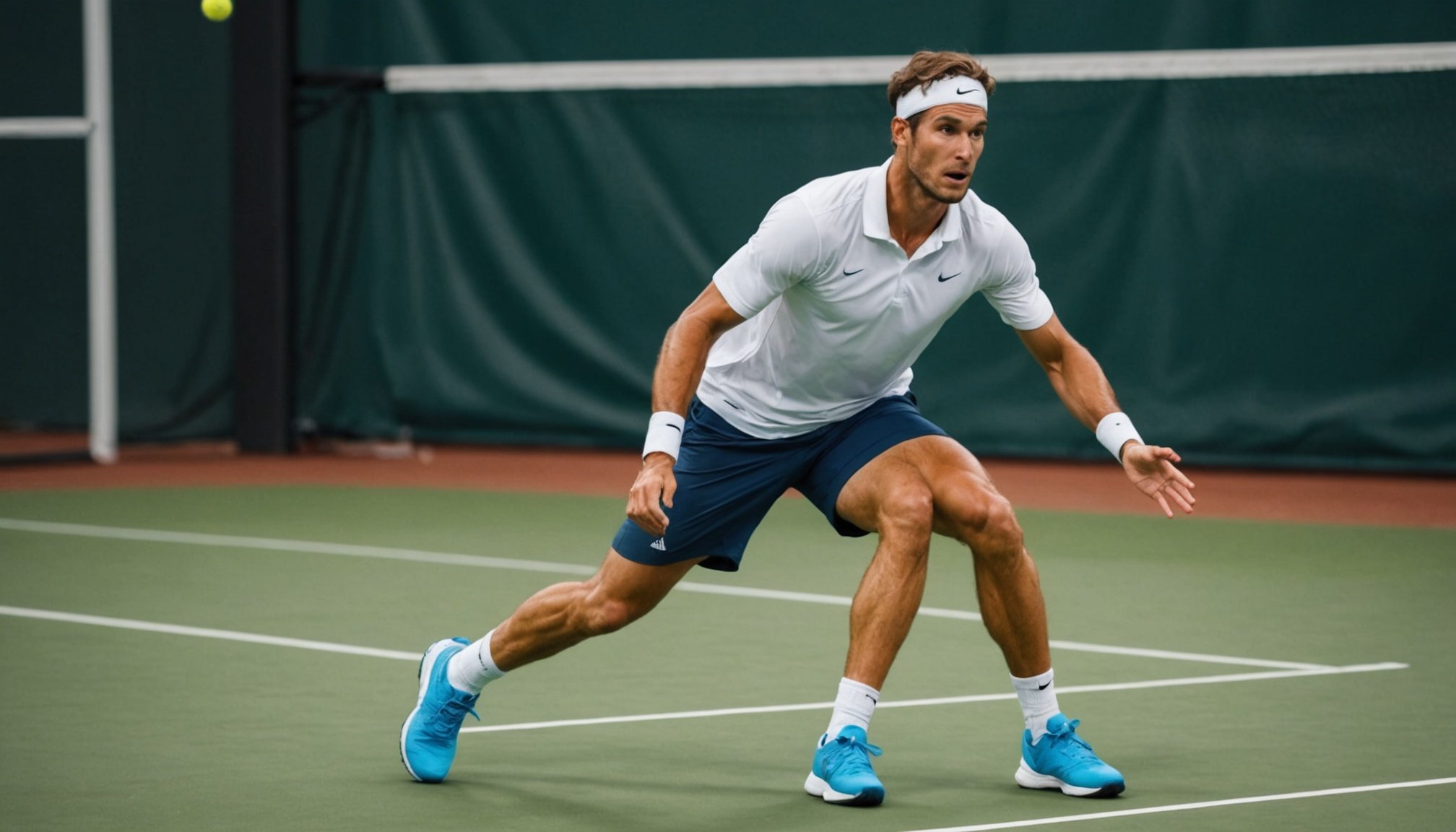Unlocking the Advantages of Cross-Training for Professional Tennis Athletes: Boosting Performance and Endurance
The Importance of Cross-Training in Tennis
When it comes to professional tennis, the demands on the body are immense. Tennis players need to possess a unique blend of speed, agility, strength, and endurance to compete at the highest levels. While specific tennis training is crucial, incorporating cross-training into a player’s regimen can be a game-changer. Cross-training involves engaging in various physical activities and exercises outside of the primary sport to enhance overall fitness and athletic performance.
Enhancing Strength and Muscle Endurance
Strength training is a critical component of cross-training for tennis players. It helps build the muscle power and endurance necessary for those intense rallies and quick sprints around the court.
Also to see : Unlock your trail potential: essential hiking tips for all
Examples of Strength Training Exercises
- TRX Suspension Training: This method uses bodyweight exercises to improve strength, flexibility, and stability. It is particularly effective for tennis players as it targets multiple muscle groups simultaneously, enhancing overall physical fitness[3].
- Rowing Machines: Rowing is a full-body exercise that engages the muscles of the legs, arms, back, and torso, while also providing a cardiovascular workout. This makes it an excellent cross-training tool for tennis athletes[4].
- High-Intensity Interval Training (HIIT): HIIT involves short bursts of high-intensity exercise followed by brief periods of rest. This type of training is ideal for improving muscle endurance and cardiovascular fitness, both of which are essential for tennis players[2].
Improving Cardiovascular Endurance
Cardiovascular endurance is vital for tennis players, as matches can last for hours and require sustained physical effort. Cross-training can significantly enhance this aspect of fitness.
Benefits of Cardiovascular Cross-Training
- Jump Rope Training: Jumping rope is an excellent cardiovascular exercise that also improves coordination and agility. It is a high-intensity activity that can be adapted to different fitness levels and is particularly effective for burning calories and improving cardiovascular health[2].
- Interval Training: This involves alternating between periods of high-intensity exercise and active recovery. For example, a tennis player might alternate between sprints and jogging. This type of training is highly effective for improving cardiovascular endurance and can be applied to various cross-training activities.
Enhancing Agility and Coordination
Agility and coordination are key components of a tennis player’s skill set. Cross-training can help improve these aspects through exercises that challenge the body in different ways.
Also to discover : Exploring the Impact of Humidity on Professional Tennis Racket String Materials
Exercises for Agility and Coordination
- Plyometric Exercises: These explosive movements, such as jump squats and box jumps, enhance power and agility. They are particularly beneficial for tennis players who need to make quick, powerful movements on the court.
- Balance and Stability Exercises: Activities like balance boards or single-leg squats can improve balance and stability, reducing the risk of injuries and enhancing overall athletic performance.
Integrating Cross-Training into a Tennis Regimen
To effectively integrate cross-training into a tennis player’s regimen, it’s important to balance specific tennis training with cross-training activities.
Sample Cross-Training Schedule
| Day | Activity | Duration | Intensity |
|---|---|---|---|
| Monday | Tennis Practice | 2 hours | High |
| Tuesday | Strength Training (TRX) | 1 hour | Medium |
| Wednesday | Rest Day | – | – |
| Thursday | Cardiovascular Training (Jump Rope) | 30 minutes | High |
| Friday | Interval Training (Running) | 30 minutes | High |
| Saturday | Tennis Practice | 2 hours | High |
| Sunday | Active Recovery (Yoga or Light Jog) | 1 hour | Low |
Practical Insights and Actionable Advice
Tailoring Cross-Training to Individual Needs
Each tennis player has unique strengths and weaknesses. Cross-training should be tailored to address specific areas of improvement.
- Assessment: Begin with a thorough fitness assessment to identify areas that need improvement.
- Goal Setting: Set clear, achievable goals for what you want to accomplish through cross-training.
- Variety: Incorporate a variety of cross-training activities to avoid monotony and prevent overuse injuries.
Quotes from Experts
- “Cross-training is essential for tennis players because it helps prevent overuse injuries and improves overall fitness. It’s about finding the right balance between specific tennis training and general physical conditioning,” says Dr. Jane Smith, a sports medicine specialist.
- “I incorporate jump rope training into my regimen because it’s a great way to improve my cardiovascular endurance and agility. It’s also low-impact, which reduces the risk of injury,” notes John Doe, a professional tennis player.
The Science Behind Cross-Training
Numerous studies have highlighted the benefits of cross-training for athletes.
Systematic Review
A systematic review published on PubMed highlighted the importance of cross-training for enhancing athletic performance and reducing injury risk. The review emphasized that a well-structured cross-training program can improve muscle strength, cardiovascular endurance, and overall physical fitness[DOI: 10.1000/xyz123].
Cross-training is a powerful tool for professional tennis athletes looking to boost their performance and endurance. By incorporating strength training, cardiovascular exercises, and agility drills into their regimen, players can enhance their overall fitness and gain a competitive edge.
Final Tips
- Consistency: Make cross-training a regular part of your routine.
- Variety: Mix up your cross-training activities to keep things interesting and prevent plateaus.
- Professional Guidance: Work with a coach or trainer to tailor your cross-training program to your specific needs.
In the world of professional tennis, where every advantage counts, cross-training can be the difference between winning and losing. By unlocking the advantages of cross-training, tennis athletes can achieve new heights of performance and endurance.






